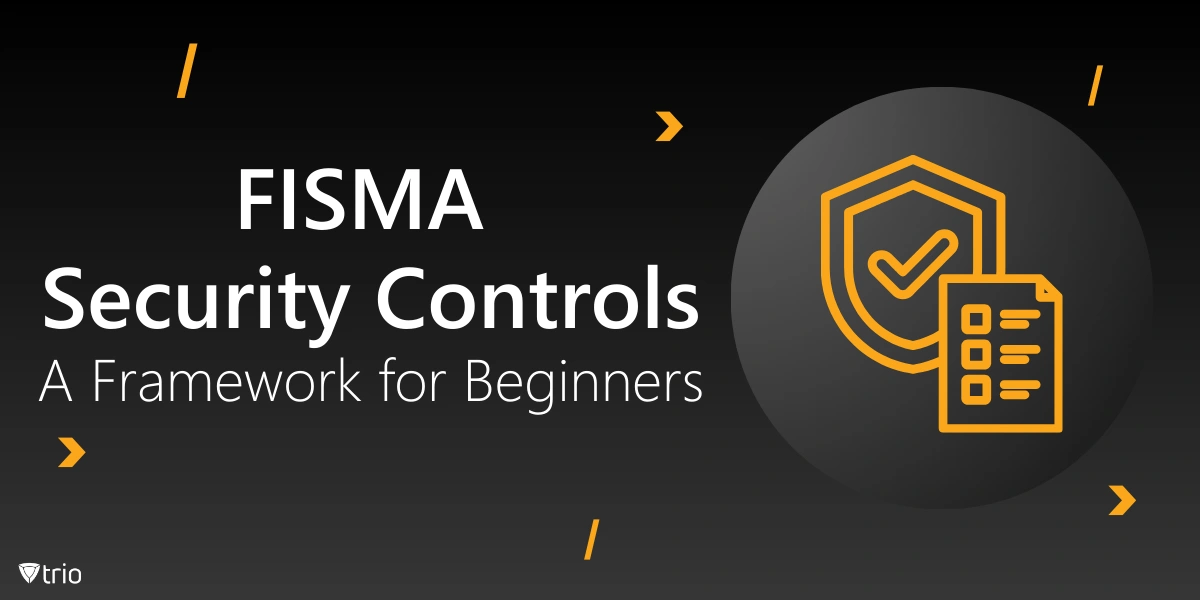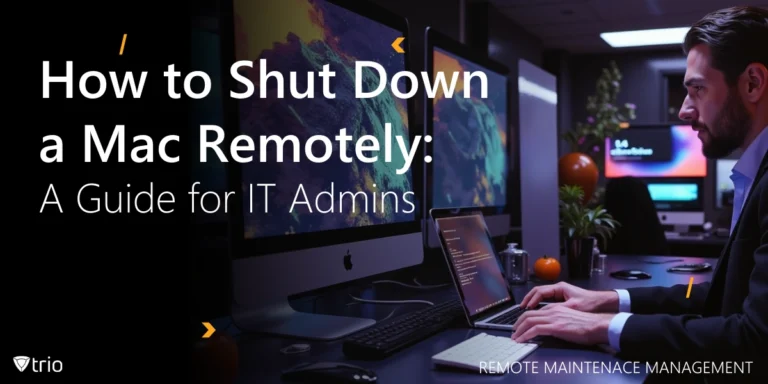The Federal Information Security Management Act (FISMA) is a crucial framework for ensuring the protection of federal information systems and data. Established in 2002, FISMA mandates that federal agencies and contractors develop, document, and implement information security programs to safeguard sensitive data. For beginners navigating FISMA’s security requirements, understanding its core security controls is essential for ensuring compliance, strengthening security, and protecting federal information from potential threats. In this blog, we’ll break down FISMA’s meaning, the fundamentals of FISMA security controls, discuss how they work, and outline how organizations can achieve compliance effectively.
What Is the Federal Information Security Management Act?
The Federal Information Security Management Act of 2002 was enacted to bolster the security of federal information systems against cyber threats. The act requires federal agencies and private sector companies that work with federal agencies to maintain comprehensive data security programs. These security programs must follow a standardized set of security controls, primarily outlined by the National Institute of Standards and Technology (NIST).
The NIST Special Publication 800-53 provides the most commonly referenced set of security controls for FISMA compliance, offering a structured approach to securing information systems. In addition, FISMA compliance is not a one-time event but a continuous process of managing risks, testing security protocols, and updating security measures as threats evolve.
Why FISMA Compliance Matters
FISMA compliance ensures that federal agencies and their partners protect sensitive data from unauthorized access and potential security breaches. By following FISMA guidelines, organizations not only adhere to legal requirements but also contribute to a secure and reliable IT infrastructure. Failing to meet FISMA standards can lead to regulatory penalties, financial loss, and a damaged reputation. In sectors where data integrity is critical, such as healthcare and finance, adhering to FISMA standards promotes data protection and builds trust with stakeholders.
FISMA Security Controls Explained
FISMA security controls serve as the backbone of an organization’s security management framework, providing guidelines for mitigating risks and strengthening federal information security controls. These controls are grouped into various families based on their focus areas:
1. Access Control (AC)
Access Control encompasses protocols that restrict access to sensitive information and systems. The objective is to ensure that only authorized users can access specific data or systems, minimizing the risk of unauthorized access.
- Examples: Multifactor authentication (MFA), role-based access control, and user permissions.
- Importance: Controls under this family help prevent data breaches by ensuring that only the right individuals can access sensitive information.
2. Awareness and Training (AT)
Awareness and Training controls focus on educating employees about security risks and their roles in protecting information. This includes training programs on identifying phishing attempts, best practices for password security, and understanding data handling protocols.
- Examples: Regular security training sessions, phishing simulations, and role-specific cybersecurity training.
- Importance: Human error is a common cause of security incidents; therefore, ensuring employees are well-informed significantly reduces the risk of breaches.
3. Audit and Accountability (AU)
Audit and Accountability controls are essential for tracking system activity. This control family involves logging system events, monitoring for suspicious activities, and maintaining a record of security incidents to ensure accountability.
- Examples: System logging, security information and event management (SIEM) tools, and audit trail reviews.
- Importance: These controls enable organizations to detect unusual activity quickly, facilitating a timely response to potential security incidents.
4. Security Assessment and Authorization (CA)
This family of controls ensures that organizations evaluate their information systems regularly. The FISMA assessment and authorization process involves testing the effectiveness of security controls and authorizing systems for use based on the results.
- Examples: Vulnerability scanning, penetration testing, and continuous monitoring.
- Importance: Regular assessments help organizations identify weaknesses in their systems and ensure IT compliance with FISMA.

5. Configuration Management (CM)
Configuration Management controls help organizations maintain the security of their IT systems by managing software updates and changes systematically. This ensures that systems remain secure and compatible with current security protocols.
- Examples: Patch management, configuration baselines, and change management procedures.
- Importance: Proper configuration management minimizes the risk of vulnerabilities due to outdated software or incorrect settings.
6. Contingency Planning (CP)
Contingency Planning involves preparing for potential disruptions to operations by developing plans for continuity and disaster recovery. These controls ensure organizations can continue essential functions even during a security incident.
- Examples: Disaster recovery plans, backup procedures, and business continuity plans.
- Importance: Effective contingency planning helps minimize downtime and ensures data availability during unforeseen events.
7. Identification and Authentication (IA)
Identification and Authentication controls are crucial for verifying the identities of users accessing the system. These controls ensure that only authorized users can access systems by confirming their identities before granting access.
- Examples: Unique user identification, biometric authentication, and two-factor authentication (2FA).
- Importance: These measures prevent unauthorized access, which is a critical aspect of protecting sensitive information.
8. Incident Response (IR)
Incident Response controls prepare organizations to detect, respond to, and recover from security incidents. A well-established incident response plan helps organizations contain and mitigate the effects of security breaches.
- Examples: Incident response plans, incident detection systems, and incident response training.
- Importance: Having a structured response to incidents helps limit the damage caused by security breaches and accelerates recovery.
9. Maintenance (MA)
Maintenance controls ensure that systems are serviced regularly and securely, reducing the likelihood of vulnerabilities due to poor system upkeep. These controls cover both physical and digital maintenance activities.
- Examples: Regular hardware inspections, remote maintenance tools, and maintenance logs.
- Importance: Proper maintenance minimizes the risk of system failures and potential vulnerabilities that could compromise security.
10. Media Protection (MP)
Media Protection controls focus on safeguarding sensitive data stored on physical media, such as USB drives or hard disks. This includes controlling access to media and securely disposing of media containing sensitive information.
- Examples: Encryption, secure disposal procedures, and media storage protocols.
- Importance: Effective media protection prevents unauthorized access to sensitive data, even when it is stored offline.
11. System and Communications Protection (SC)
These controls protect the systems and data while they are transmitted and processed. They include network security measures to prevent unauthorized access to systems and ensure secure communication channels.
- Examples: Firewalls, secure protocols (like HTTPS), and network segmentation.
- Importance: These controls safeguard data in transit, preventing interception or tampering by unauthorized entities.
12. System and Information Integrity (SI)
System and Information Integrity controls ensure that systems operate as intended by preventing, detecting, and correcting errors and security incidents. These controls are vital for ensuring that data remains accurate and reliable.
- Examples: Antivirus software, intrusion detection systems (IDS), and data validation protocols.
- Importance: Integrity controls ensure that systems are free from corruption, malware, and other threats that could compromise data accuracy.
Download Our Free FISMA Compliance Checklist
Stay compliant with FISMA regulations using our free FISMA Compliance Checklist. This guide helps you assess security gaps, implement necessary controls, and strengthen your cybersecurity. Download now to simplify compliance and reduce risks.
Conclusion
For organizations looking to streamline their FISMA compliance efforts, a Mobile Device Management (MDM) solution like Trio can be invaluable. Trio MDM offers features that support FISMA security controls, such as automated configuration management, robust authentication protocols, and real-time monitoring and reporting. With Trio, organizations can implement security controls across their devices seamlessly, ensuring FISMA compliance while simplifying device management. Take the first step toward FISMA compliance with Trio’s MDM solution. Start your free trial today and see how Trio can help secure and manage your devices effectively.
Get Ahead of the Curve
Every organization today needs a solution to automate time-consuming tasks and strengthen security.
Without the right tools, manual processes drain resources and leave gaps in protection. Trio MDM is designed to solve this problem, automating key tasks, boosting security, and ensuring compliance with ease.
Don't let inefficiencies hold you back. Learn how Trio MDM can revolutionize your IT operations or request a free trial today!




